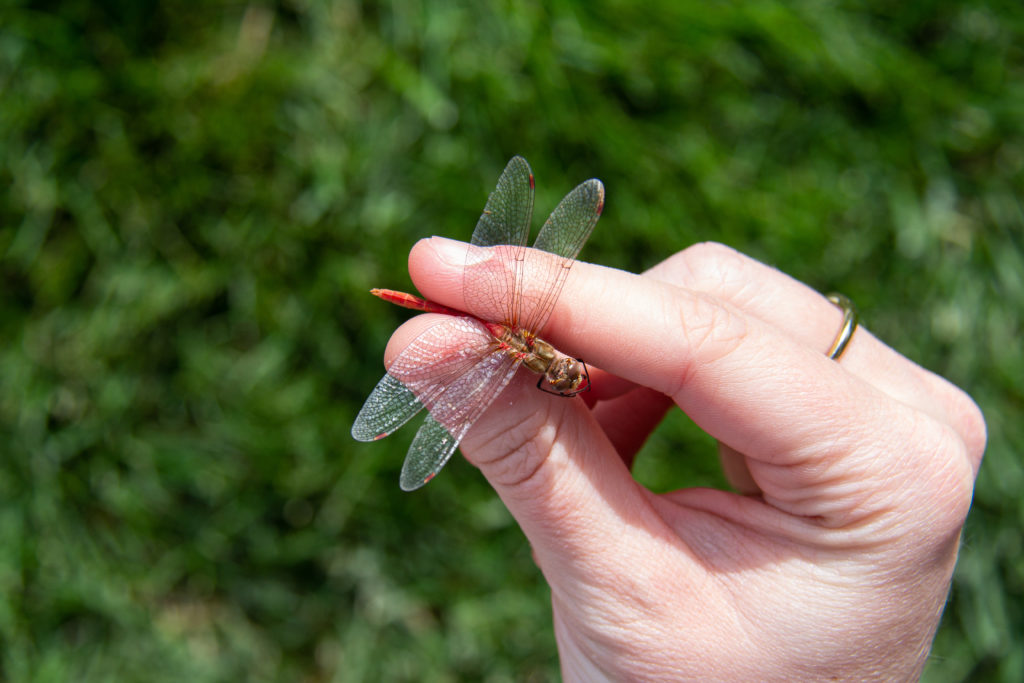
The National Science Foundation gave a $2.3 million grant distributed across five institutions to study the evolutionary aspects of dragonflies.
BYU and the American Museum of Natural History were given the largest share of the grant. The University of Florida, University of Alabama and the Naturalis Biodiversity Center in the Netherlands were the other recipients of this grant.
BYU biology professor Seth Bybee has been studying dragonflies for over 20 years, ever since his first research project on them when he was an undergraduate student at BYU. He has since created his own lab where students and professors help him on different projects.
Because of the grant, Bybee’s lab has increased funds to conduct research on color patterns, gene sequences and dragonfly speciation. He is in charge of multiple smaller projects that all contribute to the overall dragonfly evolution research, some of which are now being funded by the grant. Bybee recently returned from a sabbatical in France where he worked with professors at Montpellier University to model dragonfly speciation based on color.
His lab studies the color in live dragonflies, uses computer programs to study the color of dragonflies in images, sequences genes of about 80% of all dragonfly species, and travels all around the world to catch and study dragonflies. Bybee said over the years his lab has visited every continent except for Antarctica and over 40 countries in total.
Bybee’s lab is hoping to sequence the gene of 5,500 species over the next 18 months. He said this data will help them create a “tree of life” of dragonflies that will allow them to understand evolution of the beginning of insects.
Dragonflies may have been the first multi-colored insects. They also might have been the first flying insects. Dragonfly speciation might be driven by color, flight behavior, geographical distribution or habitat. Bybee said he hopes their research will help them discover whether these claims are true or not.
Molecular biology senior and lover of insects Alyssa Pike is involved in a mentored research program for this dragonfly project. As one part of Bybee’s lab, she is in charge of taking color readings from live specimens and images. She describes how they primarily record color through a computer program that can read all colors visible to insects, not just color visible to humans.
Pike frequently visits parks around the Provo area to catch dragonflies that she can then take color readings from.

Through studying color, Pike examines the relationship between biodiversity and multi-coloration of dragonflies.
Pike said being a full-time student and working on this research is a balancing act. “It’s difficult and demanding but I love it. It’s pulling me to another level of scholarship and academics. It’s uncomfortable, but it’s a growing experience.”
Although her true passion is studying ants, Pike is grateful for this dragonfly research that is a “stepping stone” for her career in entomology.
Graduate student and research assistant Natalie Saxton works in Bybee’s lab where she specifically studies damselflies from the island of Vanuatu. Her research is another ongoing project of which Bybee is in charge that is being funded by the grant.
Damselflies are a subspecies of dragonflies. She has been on two study abroad programs on the island where she hiked through the jungle and rivers catching hundreds of dragonflies and damselflies to study.

Saxton fondly recounted a memory of her and Bybee climbing up the side of a cliff and finding a new species of dragonfly that blended in with the dark rock. It was one of many memorable discoveries on their trips to Vanuatu.
Her research focuses on documenting the diversity of dragonflies on the island and studying the relationships between them.
Saxton said it’s important to study Vanuatu because it is part of the South Pacific area that is understudied. It used to be an “untouched paradise” but is now being taken over by industrialization. She said she hopes they can understand and study the diversity of nature on the island while it is still there.




